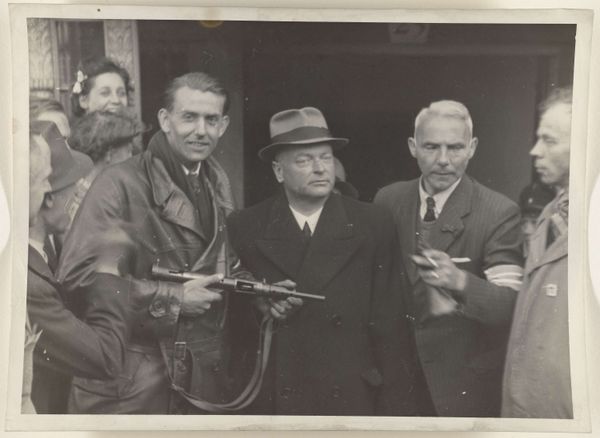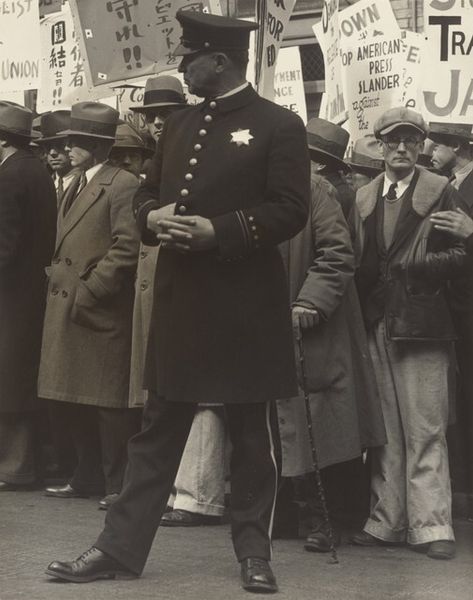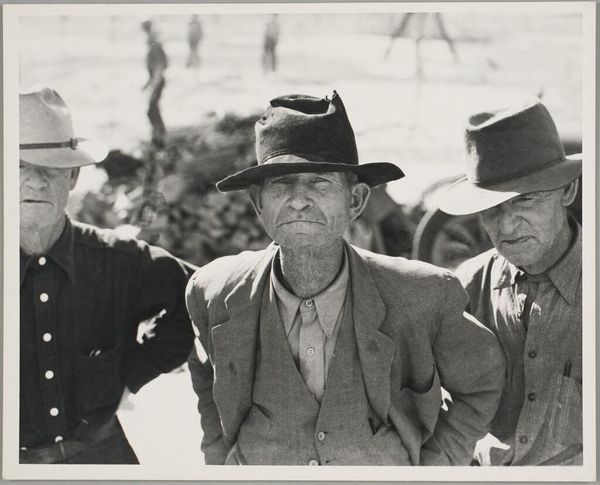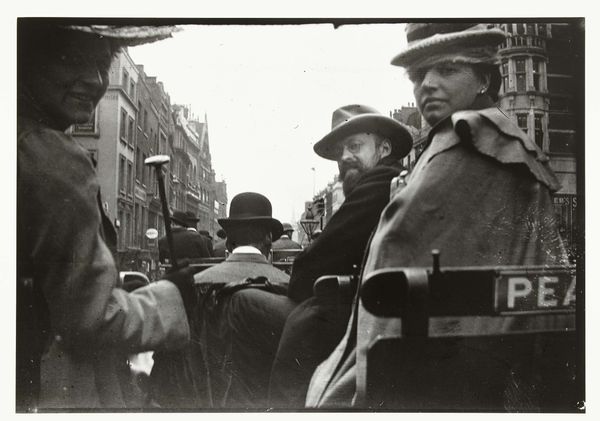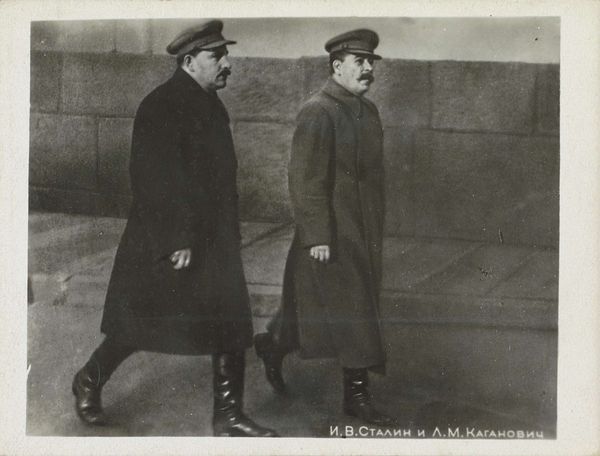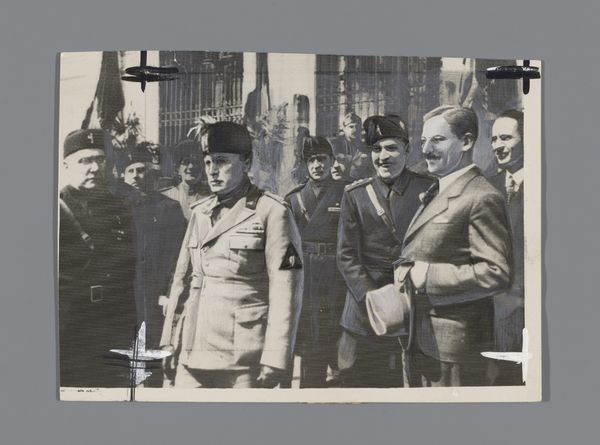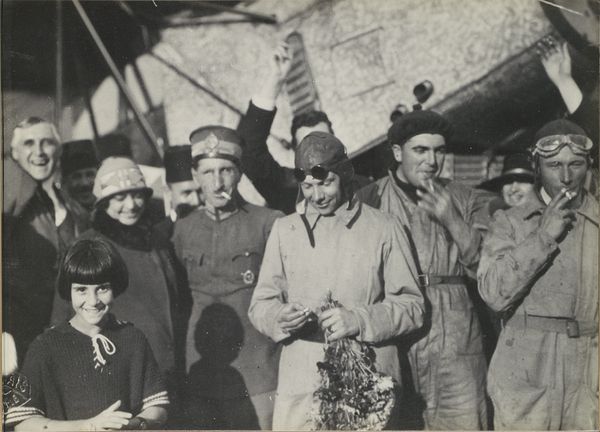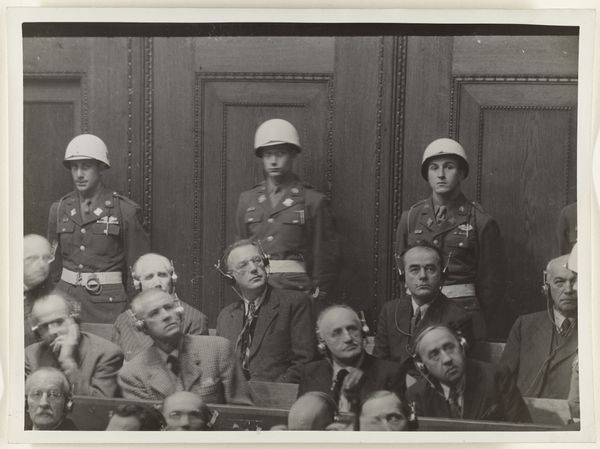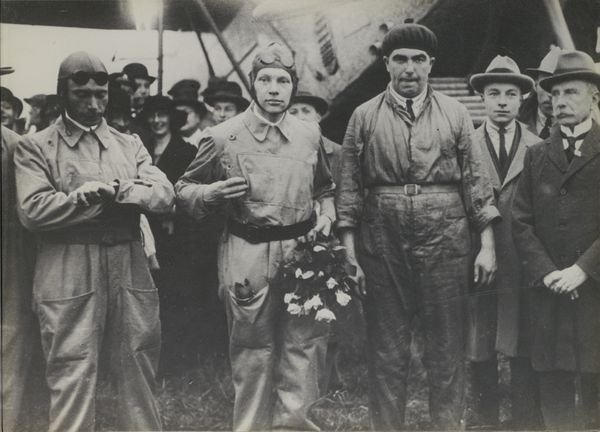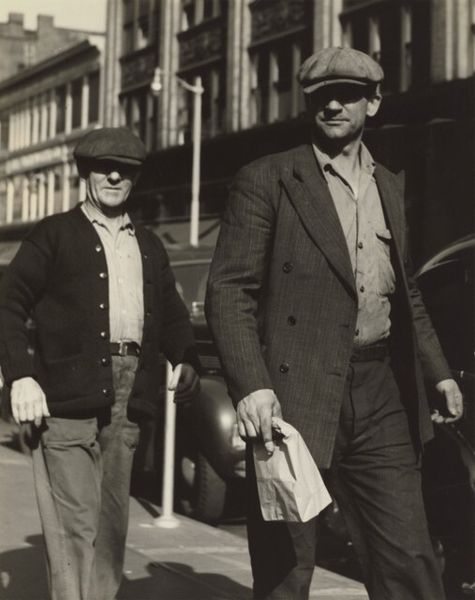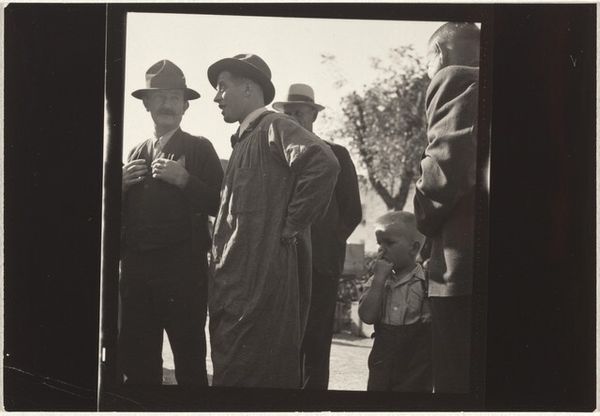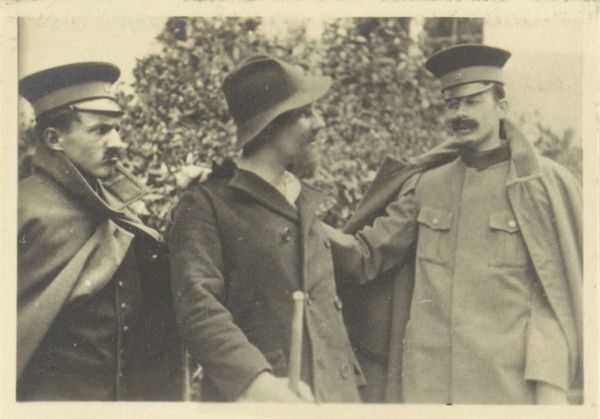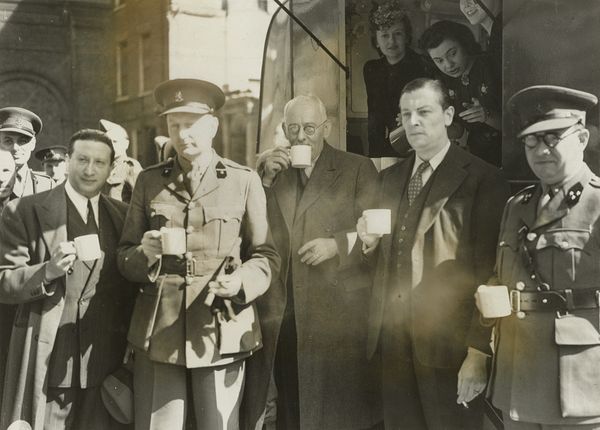
photography, gelatin-silver-print
#
portrait
#
portrait image
#
photography
#
photojournalism
#
group-portraits
#
gelatin-silver-print
#
genre-painting
#
portrait art
#
modernism
#
realism
Dimensions: height 272 mm, width 395 mm
Copyright: Rijks Museum: Open Domain
Curator: It strikes me immediately; this group seems steeped in the gravity of a significant moment. What are we looking at here? Editor: This is a gelatin-silver print from 1933 currently held in the Rijksmuseum’s collection. Its title is "KLM-bemanningsleden van de 'Pelikaan'", which translates to "KLM Crew Members of 'The Pelican.'" KLM, of course, being the Dutch Royal Airlines. It's a portrait of an airline crew—their seriousness practically palpable. Curator: Indeed. The emblems on their caps command a certain authority and invite us to unpack the layers of societal faith vested in aviation and these individuals. In those days especially, flying was relatively new—a risky enterprise to trust human lives to these professionals. What do you make of the fact they are nameless? Editor: Their anonymity resonates with broader shifts during this interwar period, where collectivity overshadowed the individual. It hints at a narrative around nascent technology and perhaps the subtle erasure of the individual to highlight this emerging corporate identity. We need to consider how labor movements shifted the dialogue from individual heroism to a collective enterprise. The symbolic power rests in what the KLM embodies and not in their separate identities. Curator: I agree. We must appreciate how, even without names, there's a quiet, stoic pride in their gaze. Note also that only the pilots wear uniforms; the rest wear civilian clothes, signaling that this select group holds special positions of honor and high expectation. This differentiation subtly evokes themes of responsibility, trust, and mastery of technology—almost shamanistic. Editor: Yes, and in those subtle costuming hierarchies are echoes of broader power dynamics – these visual distinctions emphasize societal structures and underscore the trust that the public placed in these burgeoning transportation industries and technologies of this new modernity. Considering how it relates to similar documentary photographs, this image embodies the hopes of the 1930s whilst still being a record of social relations in their era. Curator: So beautifully observed. This work reminds us of the symbolic depth that exists within simple photographs, allowing them to convey volumes about the attitudes of their era. Editor: Absolutely. Looking at the image through the lens of contemporary labor history illuminates not only advancements in technology but, more importantly, what those strides cost and who shouldered the burdens of those expectations.
Comments
No comments
Be the first to comment and join the conversation on the ultimate creative platform.
